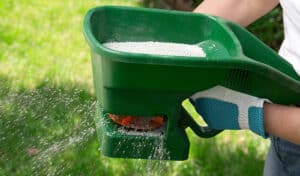Where do the bugs of summer go when the weather turns cold? And how do they reappear the next year when the temperatures warm?
Of course, the insects don’t just ‘disappear’ and magically reappear the next year. Each species has developed some way of dealing with the cold weather.
One insect follows the example of the migratory birds and heads south. The monarch butterfly’s from east of the Rocky Mountains eventually find their way to central Mexico, where they overwinter in the mountain highlands near Mexico City. One or two areas are protected as monarch refuges. Monarchs from west of the Rockies travel to a spot near Santa Barbara, California. These are true migrating insects because the same individuals that go south for the winter come back the next year.
Some other insects, such as leafhoppers and milkweed bugs, strategy for dealing with winter is to head south as the winter cools. They reinvade the next year, but in this case, it’s different individuals that return.
Most insects stay here year round. They employ a variety of tactics for survival. One is simply to move in with humans. Insects such as ladybird beetles (ladybugs), cluster flies, elm leaf beetles and boxelder bugs overwinter as adults in wall voids, attics and other out-of-the-way places in homes and other structures.
Before humans started building insect hotels, they probably found shelter in hollow logs and other natural cavities.
Many insects spend the winter in immature stages – as eggs (the bagworm is a good example), as larvae underground (cicadas and June beetles) or as pupae (the large silkworm moths such as the Cecropia).
Yellowjacket and paper wasp queens, some mosquitoes and the mourning cloak butterfly are other examples of local insects that overwinter as adults. Like the ladybird beetle, they seek out a protected spot and become dormant until warm weather activates them again.
Whatever insect you’re looking at or whatever its winter survival may be, the pattern of development doesn’t leave much room for variation. For example, moths that form cocoons in the fall must have that winter cold period. If you bring them indoors and keep them warm, chances are that they won’t complete their development. Or, if they do hatch, it will be well in advance of the proper time so they have no hope of surviving outdoors.
Though some insects may become unseasonably active during an extended midwinter thaw, the true hibernators and the majority of those that rest in the adult stage will not be tricked to become active early. Of course, that’s not much consolation to the homeowner who has to deal with a midwinter wasp buzzing the family or an “invasion” of slow, stupid flies bumbling into windows and walls during a midwinter mild spell.
The final group of insects consists of those that remain active all year round. These are primarily aquatic insects that spend the winter as immatures in rapidly flowing streams that don’t freeze all the way to the bottom.
Some insects have body fluids that act like antifreeze. Glycol-like substances that resist freezing protect the insect from being torn apart internally by ice crystals.
We can always do inside treatments during winter months to give you peace of mind knowing your home is protected






